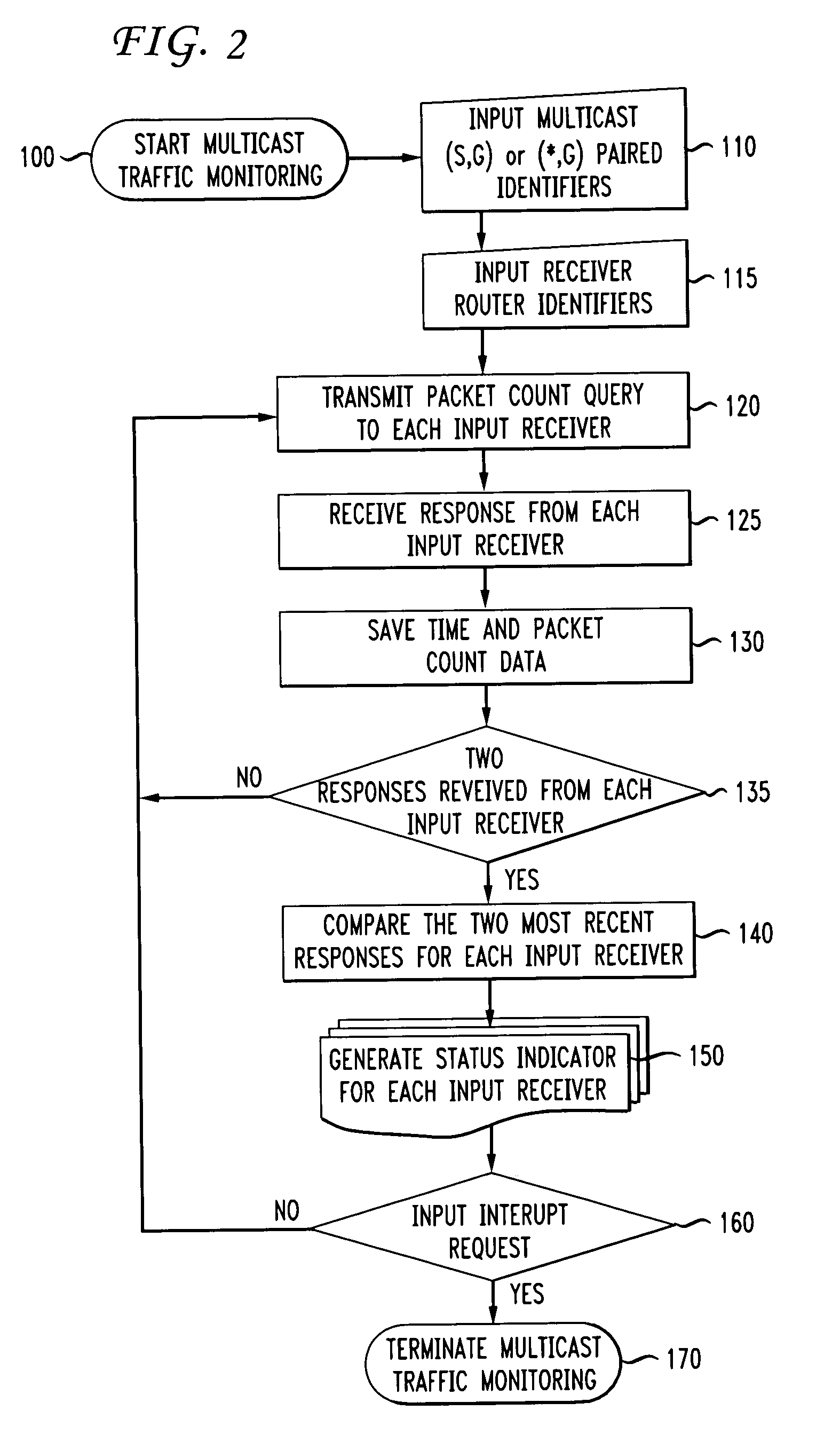Method and system of monitoring the receipt of multicast traffic
a multicast traffic and multicast technology, applied in the field of data transmission systems, can solve problems such as scaling problems, no real-time tool currently exists to provide such visualization, and it is difficult to determine which routers along the transmission path received and forwarded their data as intended
- Summary
- Abstract
- Description
- Claims
- Application Information
AI Technical Summary
Benefits of technology
Problems solved by technology
Method used
Image
Examples
Embodiment Construction
[0030]The present invention provides a method and system for managing multicast network traffic by actively monitoring whether multicast data packets are being received at routers. By retrieving packet count data from select network routers, analyzing that data and compiling and displaying the results of the analysis in a concise format, it can be used by network administrators, in real-time, as a scalable network maintenance tool. While the preferred embodiment describes proactively monitoring select multicast group transmissions, the subject invention could be applied to monitoring numerous multicast groups, with almost no limitation in the number or size of such groups.
[0031]An element of the present invention uses a customized computer software application that can be used as a network administrator tool, in accordance with the present invention. Using a programmable computer with a user interface that can access the Internet or any enterprise network, the administrator preferab...
PUM
 Login to View More
Login to View More Abstract
Description
Claims
Application Information
 Login to View More
Login to View More - Generate Ideas
- Intellectual Property
- Life Sciences
- Materials
- Tech Scout
- Unparalleled Data Quality
- Higher Quality Content
- 60% Fewer Hallucinations
Browse by: Latest US Patents, China's latest patents, Technical Efficacy Thesaurus, Application Domain, Technology Topic, Popular Technical Reports.
© 2025 PatSnap. All rights reserved.Legal|Privacy policy|Modern Slavery Act Transparency Statement|Sitemap|About US| Contact US: help@patsnap.com



